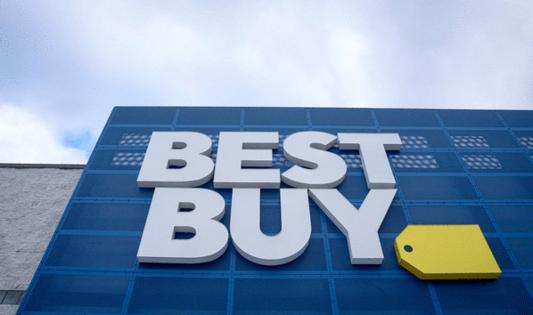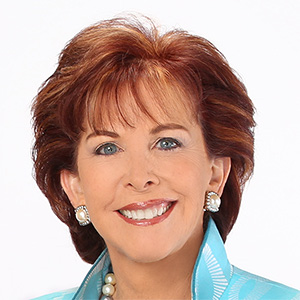More tech upgrades bump Best Buy's sales, but home purchases still lag
Published in Business News
Best Buy is starting to see signs that consumers are ready to trade in electronics they bought during the pandemic. But with economic uncertainty still weighing on shoppers, many are holding out for better deals before upgrading.
The Richfield, Minn.-based retailer has been waiting for several trends to turn in its favor, including new tech innovations that spur demand and inflation-weary customers willing to spend when needed.
The wins showed up over the summer in computing, gaming and smartphones. Best Buy said Tuesday it posted its second straight quarter of growth from July through September, following several periods of decline, aside from a small holiday-season bump last year.
“For the most part, customer shopping behavior in (the third quarter) did not change materially from the commentary we have shared for the past several quarters,” CEO Corie Barry said on a call with analysts. “Customers remain resilient but deal-focused and attracted to more predictable sales moments.”
With sales up 2.7% for the quarter, the company raised its full-year earnings outlook from a range of $6.15 to $6.30 a share to a range of $6.25 to $6.35.
Best Buy’s stock rose 5% in late morning trading after profits — adjusted for charges related to the sale of its health unit and other one-time costs — were up more than 20%. Net income, though, was down 48%.
Consumers may be offering an early glimpse at a long-awaited replacement cycle, splurging on gaming devices such as the Nintendo Switch 2 and upgrading their phones and laptops when they spot a good deal.
It’s the first meaningful lift Best Buy has seen since the wave of tech spending that accompanied the shift to remote work and school during the COVID-19 pandemic.
But company executives said shoppers are still holding back on major purchases like appliances and home theater systems. They added that more people are opting to replace only what breaks, for instance, buying a new washing machine but not a matching dryer.
The housing market effect
Best Buy typically performs better in appliance categories when the housing market is strong, Barry said on a media call.
Home Depot recently reported lower-than-expected sales, citing weaker home improvement demand and a mild pullback from consumers. Both Home Depot and Lowe’s cut their full-year profit forecasts, pointing to a tough housing market and ongoing uncertainty.
Home turnover has slowed to levels not seen in nearly 30 years. About 28 out of every 1,000 U.S. homes changed hands between January and September, the lowest rate recorded since at least the 1990s, according to an analysis by Redfin.
“The appliance category is probably the most difficult one that we have,” said Jason Bonfig, Best Buy’s chief customer, product and fulfillment officer, on the call with analysts. “We really need to meet the customer where they’re at in a very (distressed) market, and hopefully as housing and different things change, then the market starts to swing back to something that might be a little bit more normal.”
Building on momentum
Best Buy was able to build on momentum from last quarter, when it posted its first sales increase in several years, though profits at the time were dinged by restructuring costs. The most recent quarter saw a 23.3% jump in profit, down slightly from a year ago.
Shoppers are also upgrading higher-priced items when support phases out for software, including the transition from Windows 10 to Windows 11.
One continued bright spot for the consumer electronics retailer is the growing use of wearables, such as the Oura ring and Apple Watch, as people look for more ways to monitor their health. Both products saw new releases during the third quarter.
The company said it’s drawing in more lower-income and younger shoppers, crediting a wider range of price points. It also has created more areas for demonstrations that allow consumers to test a new product before committing to the hefty price tag.
Best Buy said it saw an improvement in customer satisfaction, most notably in the retailer’s ability to meet people’s tech needs. It’s third-party marketplace launched in August, more than doubling the company’s product offerings.
“Our goal is to make sure that people can live their lives, they can participate fully, but they can do it at price points that work with their budget, whatever their situation in the economy,” Barry said on a media call.
Competition getting stiffer
Still, analysts say Best Buy’s pricing advantage may be narrowing. A recent UBS analysis by Michael Lasser found the retailer is not as competitive with Walmart and Amazon as it once was, and its edge over Target has shrunk.
The report compared TVs and accessories, wearables and home equipment such as printers.
When Best Buy reported first-quarter earnings in May, it said it had raised prices on some items to offset tariff-related costs. Executives offered few updates Tuesday about how tariffs are affecting prices now but said the retailer remains focused on staying competitive.
The company said average selling prices have stayed mostly flat compared with last year, with most revenue gains coming from higher unit sales. Tariff-driven increases were applied to a small share of products, and the price impact has been lower than the effective “mid-teens” rate, executives said.
Electronics from China, including smartphones and computer monitors, are exempt from tariffs, though a reciprocal rate of about 30% remains. Best Buy said in May it had reduced the share of its products coming from China to about 30%, shifting some sourcing to Mexico.
Despite continued uncertainty, the retailer is optimistic heading into the holidays and raised its same-store sales expectations. Best Buy also nudged its full-year revenue outlook to between $41.65 billion and $41.95 billion, up from a previous range of $41.1 billion to $41.9 billion.
_____
©2025 The Minnesota Star Tribune. Visit at startribune.com. Distributed by Tribune Content Agency, LLC.












Comments